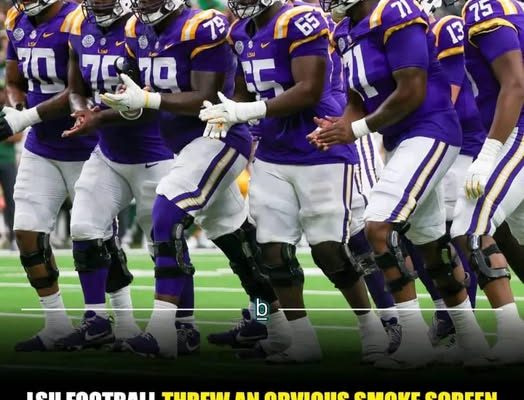The air in Baton Rouge carries a different sort of electricity this offseason. It’s not the desperate hope of a rebuild or the anxious uncertainty of transition. Instead, it’s a palpable, simmering confidence, a belief forged in the crucible of a 10-3 season and hardened by the knowledge that the nation’s most explosive weapon is returning to the backfield. The LSU Tigers, with Heisman Trophy-contending quarterback Garrett Nussmeier at the helm and a defense reloaded with high-end talent, honestly and unequivocally believe they can compete for a national championship in the 2025 college football season. This isn’t blind fan optimism; it’s a conviction shared from the top down, from head coach Brian Kelly’s deliberate roster construction to the veterans leading summer workouts. However, in the brutal reality of the modern Southeastern Conference, belief and talent alone are not enough. They must survive a war of attrition, and for the vast majority of college teams, LSU included, the battle is ultimately won or lost in the trenches. Despite the overwhelming strengths across the roster, the Tigers’ lingering questions along the offensive line may prove to be the fatal flaw that prevents a title run.
The foundation for this national title belief is undeniably solid. It begins and ends with Garrett Nussmeier. After waiting patiently behind Jayden Daniels, Nussmeier’s ReliaQuest Bowl performance was a national unveiling. He didn’t just manage the game; he dominated it, slinging the ball with a fearlessness and arm talent that has become the program’s trademark. His command of the offense, his deep-ball accuracy, and his innate gunslinger mentality make him a perfect fit for offensive coordinator Mike Denbrock’s system. He is not a replacement for Daniels; he is a continuation of a new standard of elite quarterback play at LSU. Surrounding him is a skill position group that is the envy of the country. The receiving corps, led by the transcendent Kyren Lacy and the explosive Chris Hilton Jr., is deep, fast, and talented. And in the backfield, they boast a potential Heisman dark horse in Kaleb Jackson, a battering ram with breakaway speed who seems poised for a monstrous season. Defensively, the transformation under Blake Baker has been remarkable. The unit that was a liability two years ago is now a fearsome strength. Harold Perkins Jr. is being unleashed in a hybrid role designed to maximize his game-wrecking potential. The secondary, fortified by the return of Major Burns and the acquisition of key transfers, is experienced and deep. The defensive line, anchored by the formidable Maason Smith and a wave of talented edge rushers, is built to pressure the stellar quarterbacks of the SEC West. On paper, this roster is every bit a contender.
Yet, the path to a national championship is not paved by paper; it is carved out by the big men up front. Football’s eternal truth remains: the game is won at the line of scrimmage. For all of Nussmeier’s arm talent, he requires time to allow complex downfield routes to develop. For all of Jackson’s power and speed, he needs creases to explode through. This is where the single greatest question mark for the 2025 Tigers resides. The offensive line was a point of concern throughout the 2023 season, exhibiting inconsistency in pass protection and struggling to establish a dominant push in critical short-yardage situations. The departure of core veterans like Charles Turner and Miles Frazier leaves a void of experience and proven SEC-level performance. While the Tigers have actively addressed this through the transfer portal, bringing in talent like tackle Zalance Heard, integration is the key. An offensive line is not a collection of individual talents; it is a single, cohesive unit that operates on communication, trust, and synchronized technique. Developing that chemistry takes time, a luxury not always afforded in the gauntlet of an SEC schedule. The new-look line, likely featuring a mix of transfers and returning players like Emery Jones, must gel quickly and completely.
The schedule does them no favors. This is not a unit that can ease into the season. They will be tested immediately and relentlessly. The season opener in Las Vegas against a physical USC team will be a baptism by fire. A few weeks later, they dive headfirst into the SEC meat grinder: at Texas A&M, home against Ole Miss, at Arkansas, and then the defining stretch that will make or break their championship dreams: Alabama at home, followed by a trip to Florida, and then the ultimate test, facing the reigning national champions, the Clemson Tigers, on the road. This is a murderers’ row of defensive fronts. They will face schemes designed to confuse young linemen and pass rushers who are future first-round NFL Draft picks. Every single one of these games will hinge on the performance of LSU’s offensive line. Can they hold up against the relentless pressure of an Alabama defense that will be seeking revenge in Death Valley? Can they create running lanes against a monstrous Clemson defensive front that is built to suffocate opposing offenses? If the line falters, even slightly, the entire offensive engine seizes up. Nussmeier, for all his courage, will be forced into hurried throws, sacks, and potentially costly turnovers. Jackson’s explosive runs will be reduced to two-yard gains against stacked boxes. The margin for error in these games is infinitesimally small. A single missed assignment, a blown protection, a failure to get a push on 3rd-and-1—any of these can be the difference between a championship-caliber season and a three-loss campaign.
This is the paradox of modern college football. The sport is often dominated by superstar quarterbacks and flashy receivers, the players who grace the highlight reels and win the Heisman Trophies. But their success is almost entirely dependent on the five largely anonymous players tasked with protecting them. A great offensive line can make a good quarterback look great and a great running back look unstoppable. A suspect offensive line can make even the most talented skill players look ordinary. LSU finds itself in the latter predicament, a team with championship-level talent at nearly every position group being potentially held hostage by the uncertainty in the trenches. Coach Kelly is acutely aware of this, hence the aggressive portal strategy. The potential is there. The raw talent is there. But potential is the most dangerous word in sports. It signifies hope without a guarantee of production.
The belief within the LSU facility is real. It is built on the confidence of a quarterback who has waited for his moment, a defense that has found its swagger, and a roster dripping with blue-chip talent. They have every reason to think they can compete with anyone in the country. The goal is not just to reach the expanded College Football Playoff; it is to win it all. However, the journey to a national championship is a brutal physical ordeal, a weekly test of will and execution against the best athletes in the country. For LSU to navigate that journey and emerge victorious, they must solve the riddle that has confounded the majority of teams across the nation. They must find a way to transform their offensive line from a question mark into an exclamation point. The Tigers have the stars, the coaching, and the sheer audacity to dream big. But dreams in the SEC are often shattered at the line of scrimmage. The 2025 season will be a story told in the trenches, and for LSU, the final chapter of their championship hopes will be written by the five men up front. Their success, or failure, will determine everything.



